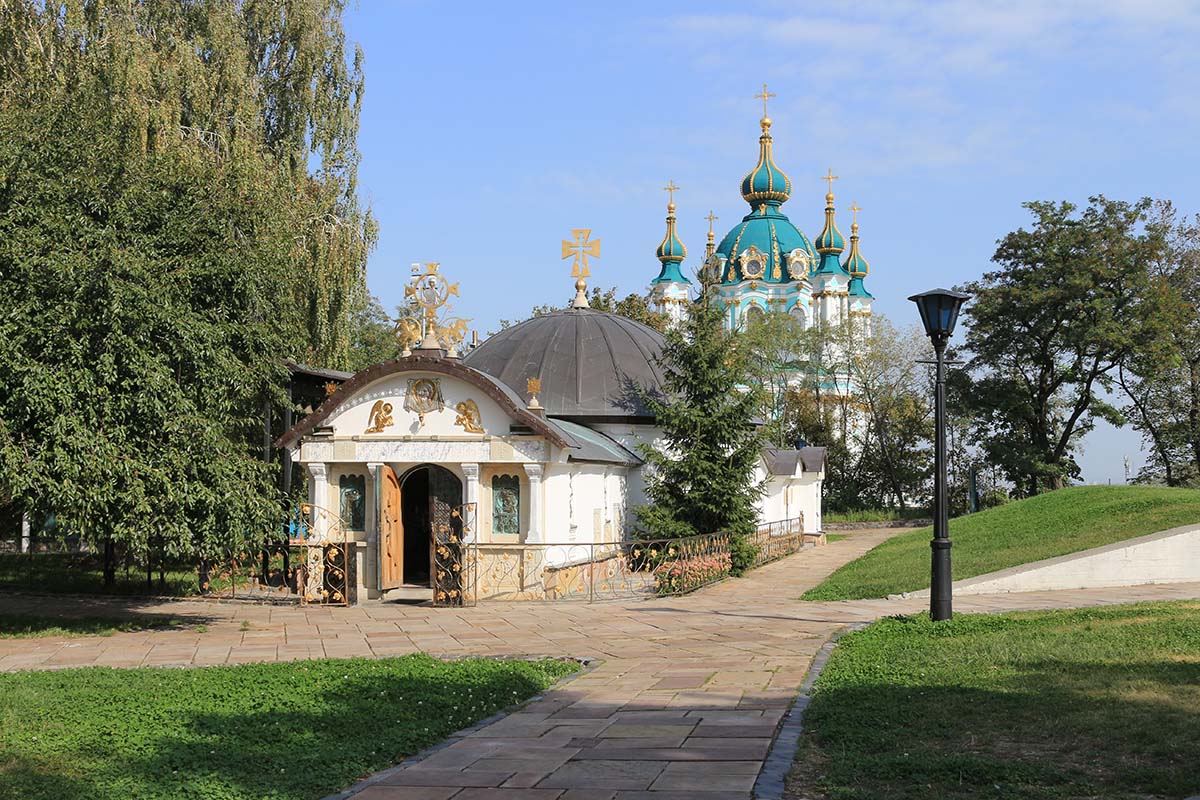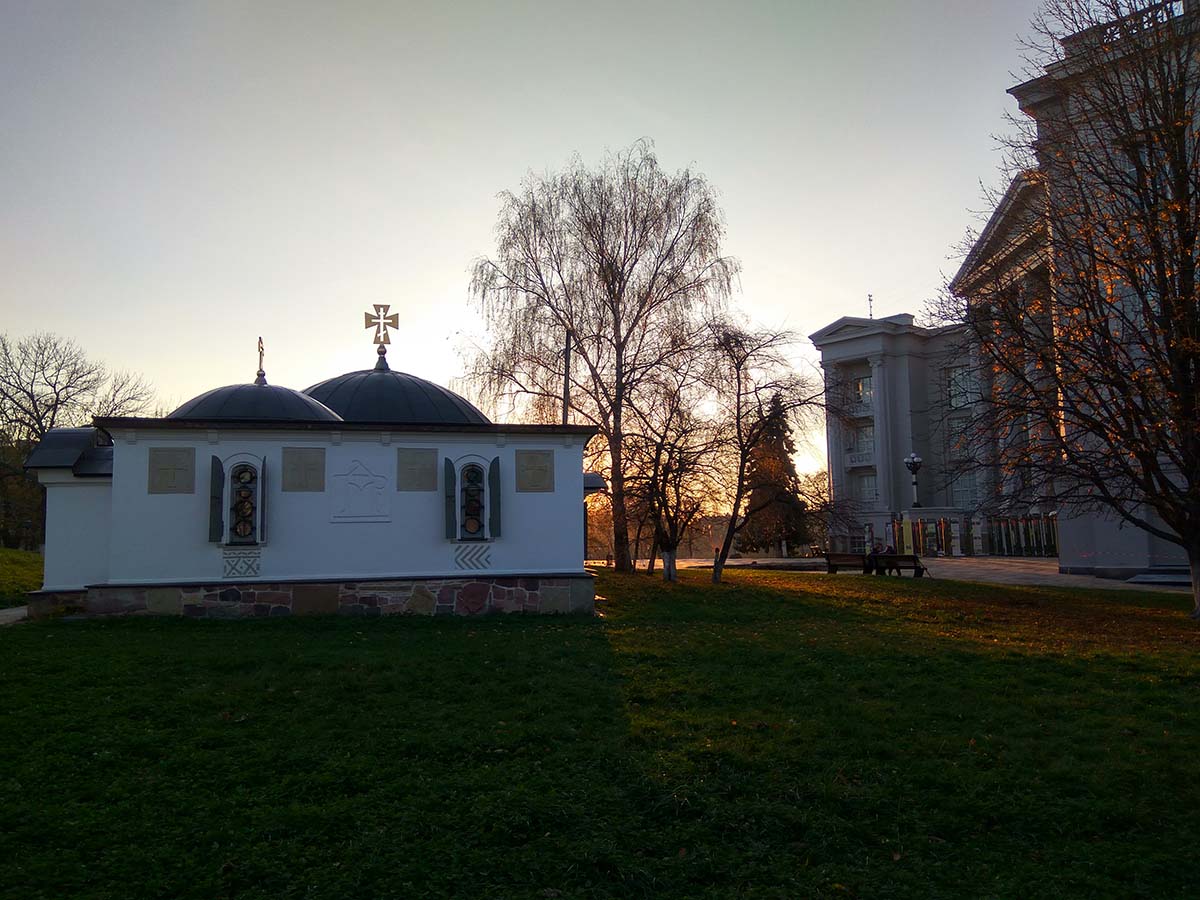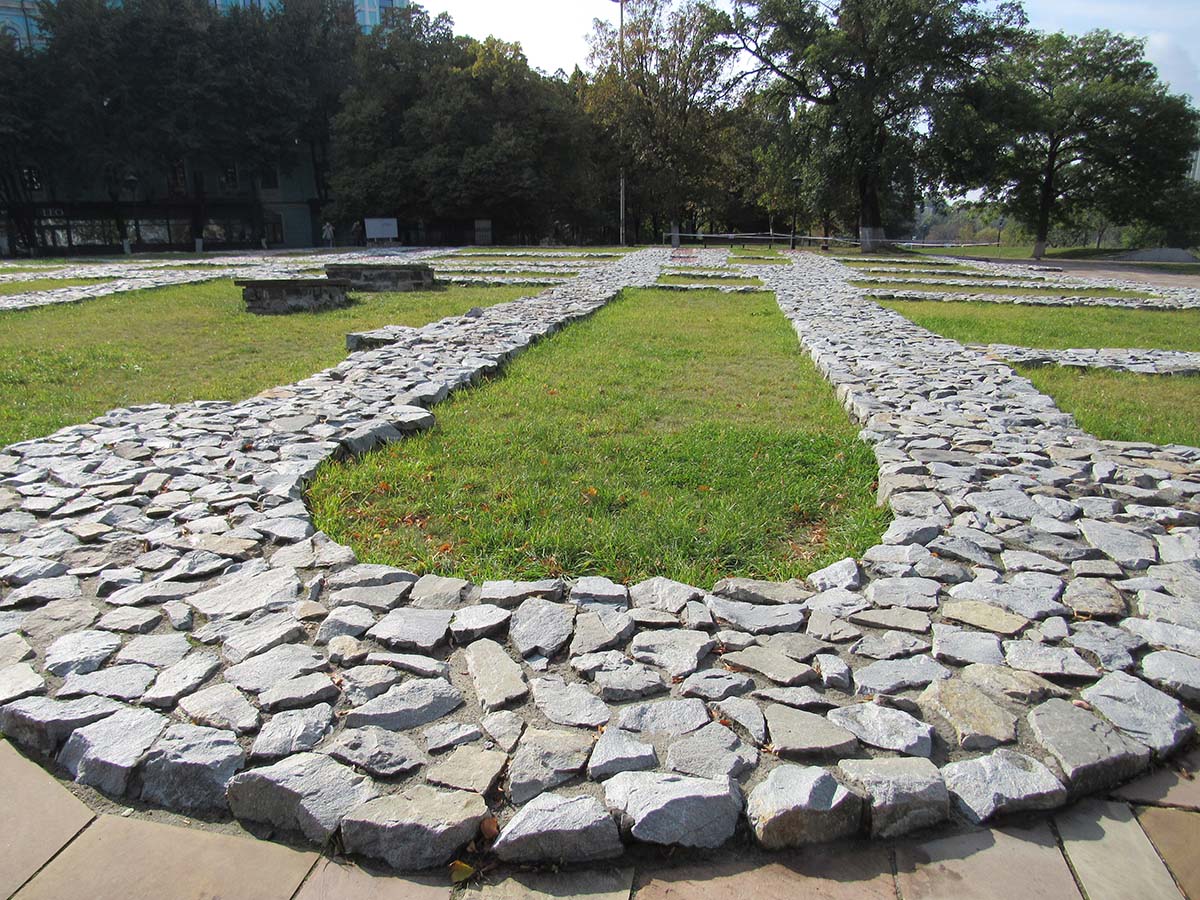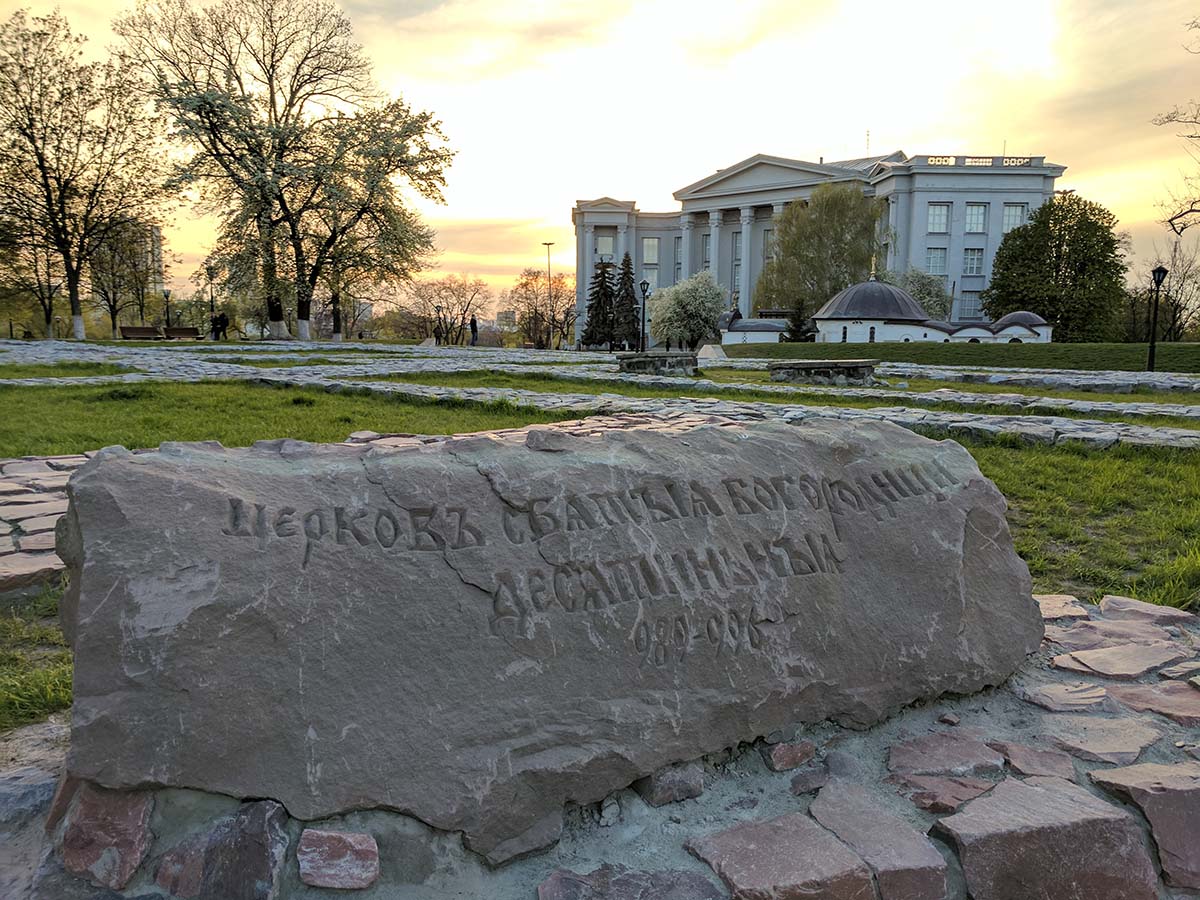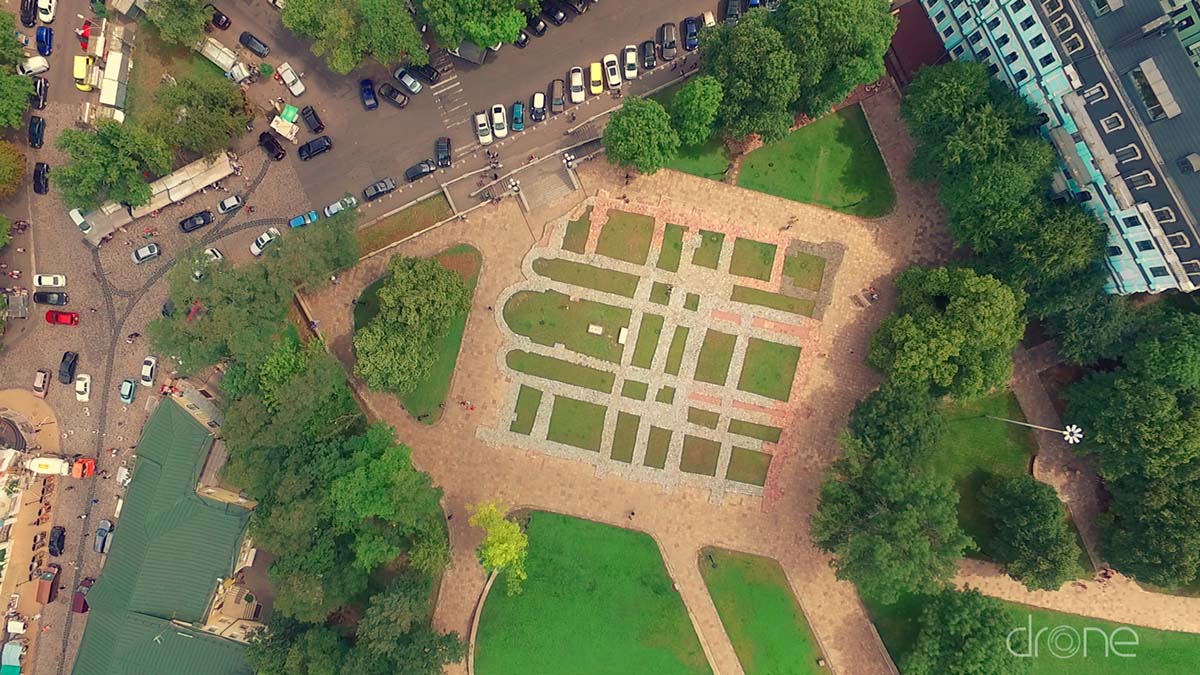According to the chronicles, the beginning of construction of the Tithe Church dates back to 989. It was built by Russian and Greek architects for 6 years as a cathedral not far from the prince’s tower – a stone north-eastern palace building, the excavated part of which is located at a distance of 60 meters from the foundations of the Church of the Tithes. Nearby, archaeologists found the remains of a building considered to be the house of the church clergy, built at the same time as the church (the so-called Olga’s tower).
Prince Vladimir Svyatoslavich, who ruled at that time, allocated a tenth of his income – tithe, where its name came from – for the maintenance of the church and the metropolis. At the time of its construction, it was the largest Kyiv temple. The chronicles reported that the Church of the Tithes was decorated with icons, crosses and precious vessels from Korsun. Marble was used abundantly in decorating the interior, for which contemporaries also called the temple “marble.” In front of the western entrance, Efimov discovered the remains of two pylons, which presumably served as pedestals for bronze horses brought from Chersonesus. It contained the relics of the holy martyr Clement, the Pope of Rome, drowned in Korsun, and the princely tomb, where they buried Vladimir’s Christian wife, the Byzantine princess Anna, who died in 1011, and then Vladimir himself, who died in 1015. Also, the remains of Princess Olga were transferred here from Vyshgorod. In 1044, Yaroslav the Wise buried the posthumously “baptized” brothers of Vladimir – Yaropolk and Oleg Drevlyansky – in the Tithe Church. During the Mongol invasion, the princely relics were hidden. According to legend, Peter Mohyla found them, but in the 18th century the remains disappeared again.
In the first half of the 12th century, the church underwent significant renovations. At this time, the southwestern corner of the temple was completely rebuilt; a powerful pylon supporting the wall appeared in front of the western facade. These measures most likely represented the restoration of the temple after a partial collapse due to an earthquake. In 1169, the church was plundered by the troops of Prince Mstislav Andreevich, the son of Andrei Bogolyubsky, and in 1203 by the troops of Rurik Rostislavich. In 1240, the hordes of Batu Khan, having taken Kyiv, destroyed the Tithe Church – the last stronghold of the people of Kiev. According to legend, the Church of the Tithes collapsed under the weight of local residents who had climbed onto the vaults trying to escape from the Mongols, but it was also suggested that the building collapsed after the besiegers used battering rams.
On the initiative of Metropolitan Peter Mohyla in the 1630s, a small church was built over the southwestern corner of the ancient temple in the name of the Nativity of the Blessed Virgin Mary in memory of the lost shrine, in which one of the oldest icons with the image of St. Nicholas was exhibited, according to legend, brought by Vladimir from Korsun. In 1824, Metropolitan Eugene ordered the foundations of the Tithe Church to be cleared. Then the foundation plan was discovered for the first time, the remains of marbles, mosaics, frescoes were found… On August 2, 1828, the beginning of the construction of a new church was consecrated, which was entrusted to the St. Petersburg architect Vasily Stasov. The temple was built in the Russian-Byzantine style and did not repeat the original architecture of the ancient Church of the Tithes. During construction, the Church of Metropolitan Peter Mogila was completely dismantled, as well as about half of the foundations of the 10th century church that had survived at that time. The construction of the temple cost 100,000 gold rubles.
In 1908-1911, the foundations of the original Tithe Church (where they were not destroyed, damaged or occupied by the new church) were excavated and examined. The remains of the foundation were studied only in 1938-1939 after the final demolition of the new church. Under Soviet rule, in 1928, the second Tithe Church, like many other monuments of culture and art, was demolished, and in 1936 its remains were finally dismantled into bricks. In July 2007, next to the remains of the Tithe Church, a wooden church was built and consecrated, which is now known as the Tithe Monastery of the Nativity of the Blessed Virgin Mary. Since 2011, the foundation of the Tithe Church has been open to everyone for inspection.
Where is the Church of the Tithes located?
Vladimirskaya street, 2
(044) 361-78-56
